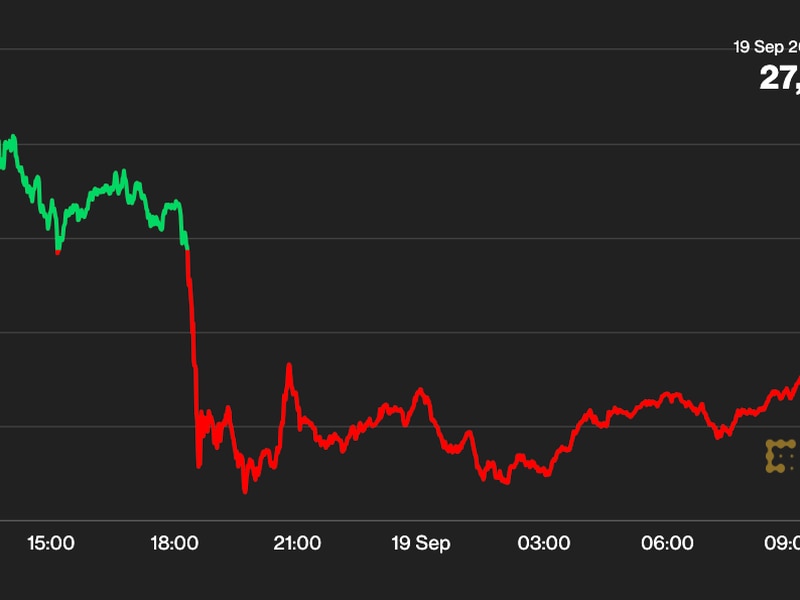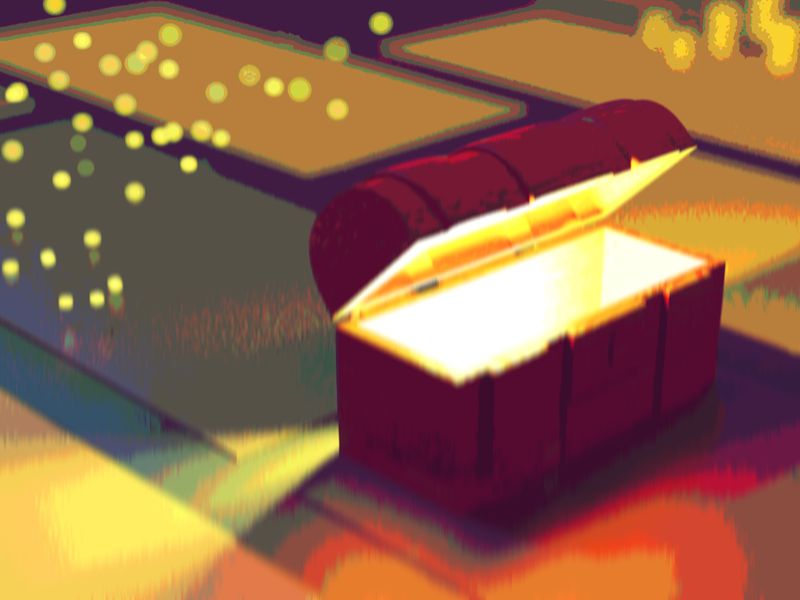As Museums Go Dark, Crypto Art Finds Its Frame
Collectibles
With the lights turned off in museums and galleries thanks to the coronavirus, artists are now presenting their work in the digital glow of online showrooms.
Last month, Art Basel, an annual mecca for the globetrotting, art-buying class, showcased an estimated $270 million worth of paintings, sculptures and other fine art for view by anyone with an internet connection. This one virtual viewing room was just the beginning for an industry kneecapped by shelter-in-place and social distancing mandates, the New York Times reported.
This step towards democratizing access to art comes with its own handicaps. Physical artifacts brought online have a tendency to be reproduced and defaced. A once unique masterpiece – priceless in theory – becomes worthless if you can’t prove its authenticity, trust the seller or stop its forgery.
“If you’re buying in a digital showroom from a competent dealer, there’s a certain level of trust,” Harry Rinker, founder of Rinker Consulting, an appraisal firm specializing in antiques, art and collectibles, said in an interview. “But the truth is there are so many digital auction sites … there’s a certain risk for the average collector to be burned.”
As the traditional, $67.4 billion art market learns to adapt to this weird interlude – where time seems refracted and human connection is made impossible – the nascent industry of blockchain-based art galleries is seeing its value tested in real time. Long predicted as an inevitable disruptor to the art market, blockchain is now a potential lifeline as all art goes digital.
Just as bitcoin paved the way for trustless, peer-to-peer transactions by creating a shared ledger of events, crypto art, typically appended to the Ethereum blockchain as non-fungible tokens (NFTs), has provenance built in. This transparent, immutable record of ownership is not only central to a functioning digital art economy but an improvement on a market that long relied on paper certificates, or sometimes PDF reproductions, of authenticity.
This is a new way of collecting art that makes a lot of sense in the digital age.
“This is a new way of collecting art that makes a lot of sense in the digital age,” said Max Osiris, an early buyer of NFTs. “The transactions are nearly instant, proof of ownership and provenance are obvious, the market is open 24/7 and there’s no geographical boundaries to who can create or collect art.”
What’s more, the same properties of cryptocurrencies that prevent double-spending ensure each work of crypto art is made digitally scarce, and therefore valuable.
Through the Gateway
That’s the thinking behind Nifty Gateway, a platform for the curation and sale of crypto art. Bought out last month by the crypto exchange giant Gemini, the firm has since hosted its first three “drops,” or exhibitions of one-of-a-kind digital artifacts. All have sold out within days of launch.
“We got a little lucky timing. I think people are spending more time with their computers and are really beginning to look seriously at digital arts for the first time,” said Duncan Cock Foster, the firm’s co-founder.
Founded with his twin brother Griffin as a paired-down tool to let people buy NFTs with their credit cards, Gemini’s backend now allows the platform to support a secondary market for trading NFT creations. It’s this innovation that’s making Nifty a legitimate counterweight to the troublesome situation of being an art collector under quarantine, and opening the possibility for new types of investing.

Art and collectibles are often categorized “alternative investments.” As tangible goods, they are considered inflation-resistant assets like gold, land and even bitcoin. But unlike other safe havens rocked by recent market turbulence, collectibles have largely held their ground.
“The market is controlled by investors,” Rinker said, speaking about the wider collectible economy. He did note that prices collapsed during recessions in 2008 and in the late 1980s after cash-strapped buyers exited. “Any market is only viable if it allows buyers to recover cash from one sale to another,” he said.
After only a month in operation, the works sold on Nifty’s secondary market have seen a steady increase in value. A piece called “Wings: Regular” created by New York-based pen-and-ink-gone-NFT artist John Guydo, listed in Nifty’s first drop for $20 is now selling for $250. Other works, taken in aggregate, have seen doubling in valuations, Griffin Cock Foster said.
This is in spite of an NFT market that has been hollowed out in recent years. Both Cryptokitties and CryptoPunks, the latter once popular enough to hang in Zurich’s Kate Vass Galerie, see abysmal transaction volume compared to their 2017 highs.
“According to my experience, it takes 30 years to create a viable secondary market. So anyone buying this stuff coming out new, has better expect to live for 30 years at least to see how it does. And my guess is that it won’t do very well,” Rinker said. (It’s worth noting that Rinker earned the epithet “Beanie Meanie” for calling the top of the Beanie Baby bubble, to which bitcoin is often compared.)
The Cock Foster twins have had a quality draw of the artists on display. The firm’s enigmatic owners, the Winklevoss twins, were able to rope in their photographer friend Lyle Owerko, who earned a reputation capturing the scene of the 21st century’s first crisis: the 9/11 attack on the World Trade Center.
Art is only collected by incredibly wealthy people, like rappers and bankers, yet [artists are] followed and adored by people that can’t afford their art.
The craft of photography is as much a science as an art, which goes a long way in explaining why Owerko was attracted to making nifties. But he was also attracted by the prospect of reconnecting with an audience that can no longer afford his work.
“If the internet is the new gallery … then the only barrier is your choice whether to buy or not, not the velvet ropes of the traditional taste makers,” Owerko said. It was Owerko’s exhibition and praise for the platform that initially interested the visual artist and founder of Def Jam records Cey Adams to participate in the latest Nifty drop.
“The stuff is moving fine,” Adams said of his pop-art imbued brand of graphic design. In a little less than a week, buyers have snatched the highest cost and most limited prints in his “Numbers” exhibition. “I’m still trying to wrap my mind around these people who care about this, why they care, and how anyone even knows about this,” he said.
Taking cues from the shuttered-for-now physical art galleries, Nifty is looking to run a show every two to three weeks, “and build a reputation as a gallery that displays high quality work consistently,” Duncan Cock Foster said.
What makes an NFT?
Browsing through the digital exhibitions, I was intrigued. Cey Adams’s work reminded me of a painting I had seen hanging in the galleries of the Metropolitan Museum of Art, long before it closed its doors.
But what makes an NFT “high quality?” Where is the value in a digital reproduction, even if it’s one-of-a-kind and signed by a renowned artist? The Cock Foster twins said they don’t have access to much biographical information of Nifty users, but suspect they’re in their 30s, male and “interested in art and technology.”

Rinker, a man in his late 70s, said, “What do I want with a digital collection? Where’s the fun in something if you can’t hold it, play with it, and caress it.” Ryan Colditz, a crypto artist who works under the name Coldie, thinks that at least some of its value comes from its portability, especially as “our lives are becoming more digitally based.”
For others, the value is perhaps best described as intrinsic. “I think art is so personal. I know a lot of my collectors have said ‘this piece really speaks to me’ and that’s why they bought it,” Max Osiris, the early adopter, said.
While we may bemoan the loss of experiencing art firsthand, the possibility of creating in a new medium allows for radically new approaches to production. “We like to encourage our artists to really embrace the media… Like, hey, go crazy, make some animated digital artworks, make some vector files, do something that you can’t do in the physical media,” Duncan said.
“I know that to stand out, I have to keep making art that is relevant yet interesting in its own ways,” Osiris said. “It’s the age of experimentation really. There’s movements and there’s individual artists, particular pieces that tend to define these eras.”
Coldie agrees, and said crypto artists aren’t merely appending work to the blockchain, but telling the “culturally significant” story of blockchain as it develops.
Even if an artist can’t pin down why something resonantes, the immediacy of tokenizing a work and having it available to a global audience is helping artists, like Owerko, refine their style for the digital age.
“I have contemporaries whose art is only collected by incredibly wealthy people, like rappers and bankers, yet they’re followed and adored by people that can’t afford their art,” Lyle Owerko said in a phone call. “There’s this chasm between collectors and their audience.” Being able to sell a $20 nifty helps Owerko close the gap and rediscover what his art actually means to people.

That being said, not all in the crypto art world are supportive of Nifty’s project. “As far as we see [Nifty Gateway] doesn’t add too much innovation and takes a step in the wrong direction by using a centralized exchange as the core of its app,” said Nate Geier, CEO of Mintbase, another NFT platform.
Geier said sites such as SuperRare and KnownOrigin paved the way for attracting non-crypto users to think about digital assets, and fully decentralized sites like CryptoVoxels and OpenSea provided a place for people to use, display, and exchange these assets in the interoperable landscape.
“They never really walked me through what to expect. To be honest, I wish they gave me more advice about what I was doing and why I should care,” Cey Adams, an artist on Nifty Gateway, said of the Cock Fosters. “It would be nice if I could log in one day and see how this works and if I made money and if I can transfer it. But no one has done or said anything. It makes me wonder,” he said, taking a beat. “It doesn’t feel real.”
“In collectibles, we sell dreams, stories and wonders,” Rinker said. “Believe whatever story you’re told and hope to God it’s true.”









